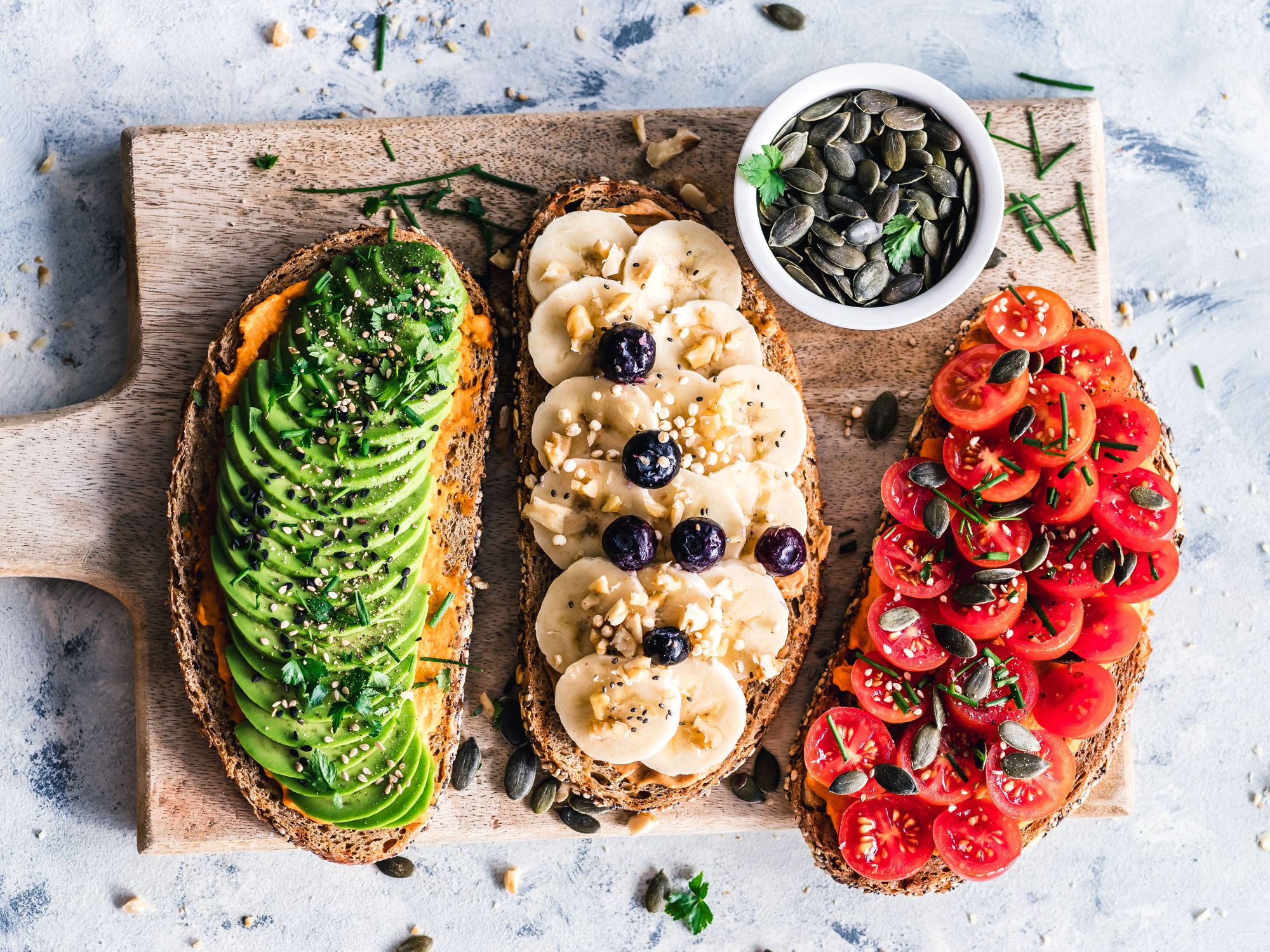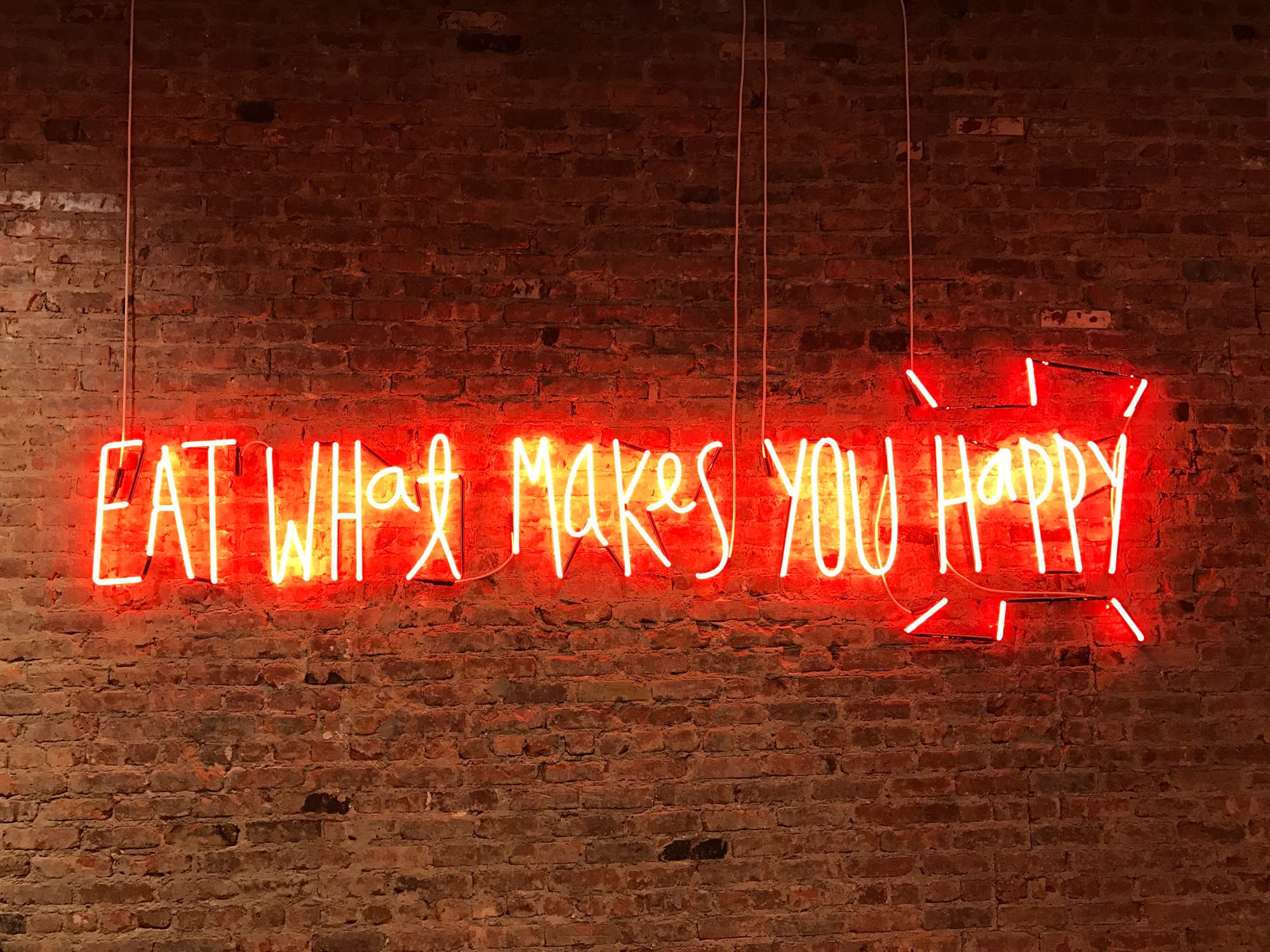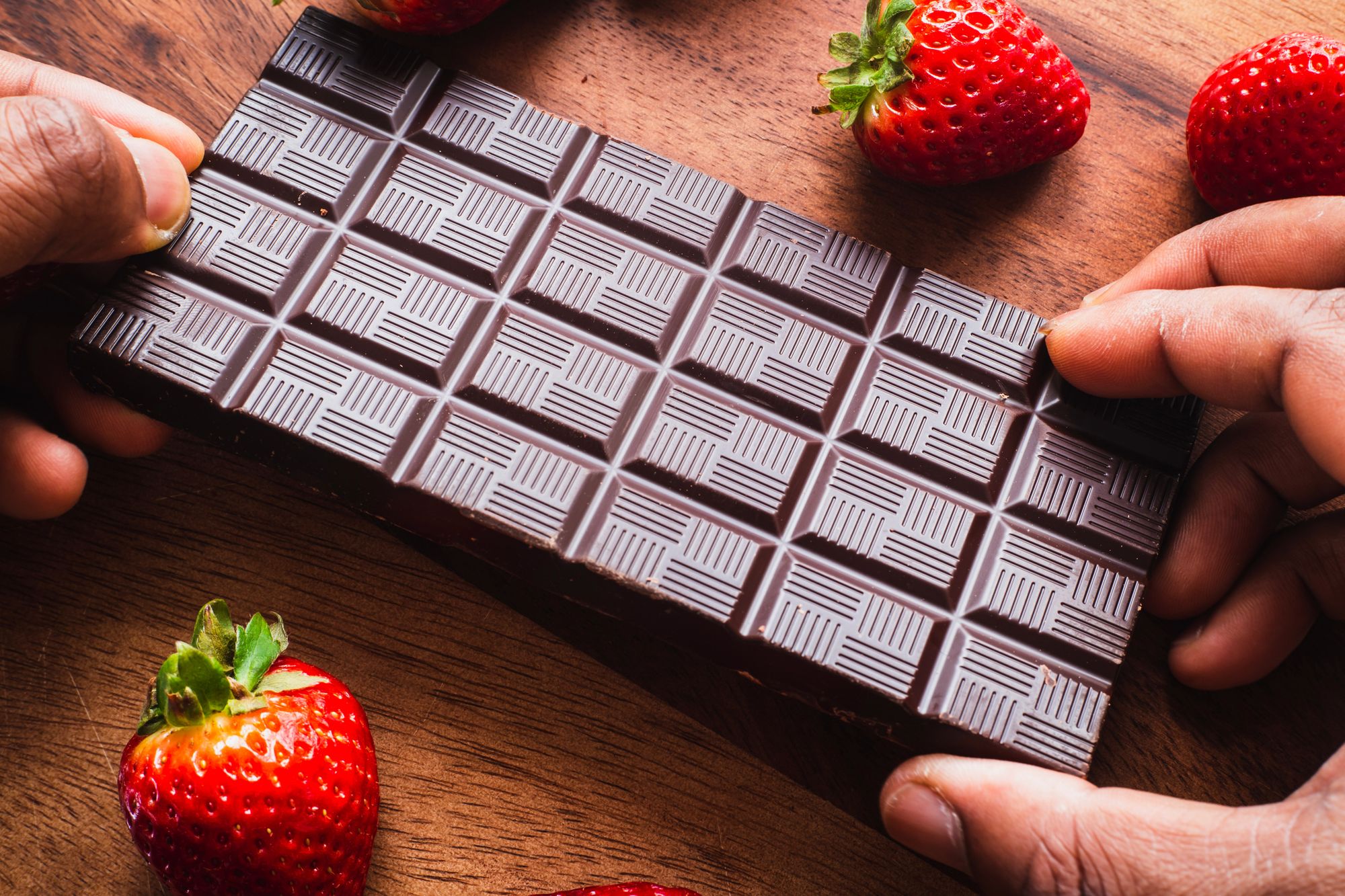Are we what we eat? If so, I am a bag of tortilla chips and a pumpkin spice latte far more often than I’d like to admit.
Hippocrates, ancient greek physician and the “father of western medicine” famously said, “Let food be thy medicine and medicine be thy food.” If he came back to witness what’s happening with diet in America today, he’d probably say, “Aw geez. COME ON, people! Am I talking to myself over here?”.
The known scientific links between health and food were first ‘proved’ in the mid-1800's when Scottish naval surgeon Dr Joseph Lind, ran one of the earliest ever clinical controlled trials and showed that citrus fruits could prevent sailors from getting scurvy. Since then, it’s been shown in countless studies that our highly processed, sugar laden, high saturated fat diet leads to obesity which leads to many health issues like cardiovascular disease, diabetes and some cancers. These diseases are among the leading causes of death in the United States.
How will the changing landscape of information change our relationship with food? Since diet is inextricably linked to health and wellness, how must the healthcare industry evolve its offerings surrounding diet and nutrition to keep up with health effects and developing consumer expectations?
Landscape
We’ve put on a few pounds… In 2010 the US government’s office of Disease Prevention and Health Promotion set a goal through the “Healthy People” initiative that we’d lower our 30.5% national obesity rate by the year 2020. Well it’s 2020 and we’ve gone the opposite direction and now have an over 40% obesity rate.
It’s interesting, we have more access to information than ever before and yet we’re as unhealthy as we’ve ever been. Even in the midst of many food trends that are health conscious (veganism, organic, farm to table, gluten-free, paleo diet [the health effectiveness of each being somewhat debatable]) we’re collectively not as healthy as our ancestors. We’re not even as healthy as those of our parents on American diets (and they ate a bunch of canned food and so. much. mayonnaise.).

Part of the issue is confusion when it comes to research studies. As it turns out, most of the food research commissioned and published is funded by the food industry. Some of these studies designed to engineer positive results for the food product in question. In 2015, an interestingly named food researcher, professor Marion Nestle, found that of 168 such food studies published that year, 156 showed biased results that favored the sponsor’s interests (1). So we’re being told things like “dairy raises your good cholesterol,” which might be true, but we’re omitting the fact that dairy can also raise your bad cholesterol. We’re also being told things like kids who eat sugary candy weigh less than kids that don’t. This “research” was done by a survey that only took into account what the kids had eaten in the previous 24 hours… hmmmm. That study was funded by the American Confectioners Association.
This misinformation also hurts us when it comes to the general understanding of nutrition. We still have a hunger crisis in this country, but on top of this we have a problem with malnutrition. Even when we get enough to eat, many people don’t get the right kinds of nutrients. This becomes a severe health issue especially when it comes to the nutrition of children.
More than half of American children do not get enough of vitamins D and E, while more than a quarter do not get enough calcium, magnesium or vitamin A, according to a recent Journal of Nutrition study. This can result in a compromised immune system, stunted physical growth, reduced mental ability, chronic disease and even death.
-The Guardian
Drivers
What are the drivers for our cultural relationship to food and what affects our behavior?
Media and Access to Information
Chances are you’ve streamed a show about food in the last year. By my unscientific count there are 2,900,349,404 series about cooking, food culture, baking, regional dishes, food documentaries and culinary competition shows available to stream. Not only do food, fad diets and eating trends get covered in mainstream media, but all media. Your feed is full of composed plate shots and there are food-brand sponsored influencers. We all need to understand the star-to-rating ratio of every restaurant we go to (sure it has 4.5 stars, it only has 19 reviews.) And, of course we have some of the most iconic advertising campaigns of all time for food and beverage brands (got milk?, the most interesting man in the world, yo quiero taco bell, keeps the hot side hot and the cold side cold [help, i’m trapped in a time tunnel]).
Out of all brand mentions on Twitter, food and drink brands are mentioned the most with 32 percent share of tweets. This is compared to 17 percent for clothing and accessories mentions, 11 percent for mentions about technology, general retail and entertainment, with the remaining percentage from beauty and professional services.
-Review Trackers
Globally, food is one of our shared languages, and that language that gets a lot of media time. This information shapes our unconscious choices (like social normalization of certain foods and ways of eating that aren’t necessarily that healthy for us) and also our conscious choices (like choosing vegetarianism due to evidence that cattle farming is harmful to the environment). We take this information and our cultural notions about food and turn our eating choices into an expression of our identity.

Food Industry
Turns out breakfast is not the most important meal of the day. What? I’ll wait for you to stop weeping about your whole childhood being a lie. This idea that’s been so ingrained in our culture is actually the product of food lobbyists. Cereal and bacon lobbyists to be precise. With messaging about Lucky Charms being part of a complete breakfast and competing food industry research, we get a lot of (mis)information that comes from the food industry itself.
Gov. Recommendation
We remember our food pyramid, don’t we? In fact, we remember it so well, that for those of us of a certain age (ahem ahem) it hasn’t really registered that there’s been a new shape for our USDA recommendation (called ”my plate”) since 2011. While new guidelines are published every 5 years, this is the first year the USDA is taking public sentiment into account as to the type. 2020 also marks the first year they’re going to make recommendations for children under 2 years old. These guidelines in the past have been met with controversy. Researchers at Harvard have written an open rebuke to the USDA guidelines and challenged their recommendations.
In 2016, experts from Harvard T.H. Chan School of Public Health said that USDA had ignored key recommendations by the advisory committee, such as avoiding red meat and choosing an environmentally-sustainable diet.
-The Counter
Future of Diet and Nutrition Predictions
Diet and Nutrition is a category where I feel like “the future is here.” Everytime I read about a new advancement, where science is today in 2020, I feel the same way I did when I discovered Dippin’ Dots, which is “wow, they can DO that?.” In addition to meat grown in a lab, new methods of cooking food, plus all the new flavors that get invented, the future is
Personalized Nutrition
Turns out not everybody needs to eat the same things to be healthy and feel good. Scientists have developed an algorithm based on your gut bacteria that outlines how different food affects you personally. Some companies are starting to make food recommendations based on your DNA. While this is new and not fully tested, we’re learning more every day about DNA. Imagine a future where you can get your diet optimized for health every few days by providing a simple stool sample and a swab of the cheek (maybe switch that order).
Brain hacking
Imagine a world where when you get a craving for chili cheese fries, you then put on a Jeordi LaForge headset that connects to your brain and you can experience the flavor, the smell, the texture of chili cheese fries.
The Defense Advanced Research Projects Agency (DARPA) is designing implantable ‘neural interfaces’ that aim to boost human senses by transmitting high-resolution audiovisual information, and potentially smells and tastes, directly to the brain. - Science Focus
Modified Foods
Foods are being engineered to become more nutritious. Scientists are putting vitamins and minerals in food that doesn’t normally contain them (like putting beta carotene in bananas, for example). Imagine a world where when you get a craving for chili cheese fries, and you can choose potatoes that have 100% of your recommended iron, zinc, folic acid, vitamin A, C and B12.

Companies are also engineering sugar coated sugar. Well actually it is inert particles that are calorie free that are coated with sugar to maintain the taste. This, for better or worse, can also get fortified with vitamins, and we’ll have junk food that’s guilt free-ish. I don’t know if this is progress, but it is the future.
3d Printing
Imagine a future where when you get a craving for chili cheese fries, you go to an app and program your 3d printer to create a batch.
Until recently, 3D printing has been sugar-based, but technology is emerging that reliably prints savoury and fresh ingredients. Natural Machines has developed one such kitchen appliance that can be loaded with multiple ingredient capsules to create and cook all manner of weird and wonderful foods.
- Science Focus
Healthcare Opportunities
So what part does healthcare need to play in the diet and nutrition landscape of the future?
Healthcare Networks/Providers
Healthcare networks will need to provide a new digital footprint for their patients. With DNA testing and gut biome assessments becoming more popular, EHR’s will need to contain new assets and allow new types of patient engagement with their information. Health networks can be the ideal place to not only provide nutrition information based on these new types of assessments, but can provide more complete information based on known medical history, current medical conditions and update it with ongoing research.
Healthcare networks and research institutions are going to be looked to more often provide nutrition guidelines as the governmental guidelines are increasingly called into question. Create engaging content and platforms that help people make better informed diet decisions. It’s common to get a diet recommendation when you’ve been diagnosed with a cardiac issue, diabetes, or are recovering from a particular procedure. Since food is so aligned with healing, providing guidance for any type of health condition, or desired physical result can help people achieve better outcomes, even when their conditions aren’t currently tied to a diet issue. Help people with eczema and psoriasis better go on elimination diets. Provide nutrition guidance for the range of inflammatory and auto-immune disorders. Give people tracking platforms so they better understand what foods cause unwanted symptoms.
Health Insurance
With so much food and nutrition misinformation in the environment, Health Insurance would do well to provide better education for their covered population. This is imperative especially for parents with children under two years of age. Provide apps and platforms that better help people track and understand nutrition. Give older kids ways to learn about nutrition and give them some ownership over their families’ diet, providing programs that help their whole family make better choices.
Partnering with schools to actually provide a nutrition curriculum would help with brand awareness and build brand affinity, as would providing general nutrition content for public consumption.
Create partnerships with paid meal plans and (those you cook yourself, and those pre-cooked) to better influence the diet of your customers. This is an ideal area for collaboration with workplace employer benefit managers.
Medical devices and technology products
Working in tandem with laser technology that can identify food ingredients, create apps and platforms that let people know that they are hitting their nutritional needs for the day or over-doing it for their sugar or oils intake.
Create programs and services that can quicken the nutrition assessment cycle for their gut biome so people can get more accurate readings daily. Create new platforms that can help people use other bio-markers (blood, urine, what-have-you) to make effects of food on the physical body more transparent.
Wouldn’t it be great if a personalized platform knew your nutrient needs and deficiencies and could tell your 3D food printer to whip you up a little amuse-bouche, or a customized vitamin (less fun) that happened to fulfill your mineral quotient for the day.
Thanks for reading. I have to go. I suddenly have a craving for some chili cheese fries. We’ll cover more wellness integration opportunities for healthcare in the upcoming future of wellness articles for healthcare on LUX at Propane.agency.
By Kim-Minh Huberwald
Director of Strategy, Propane
Propane, Digital Agency
San Francisco, CA
415 550 8692